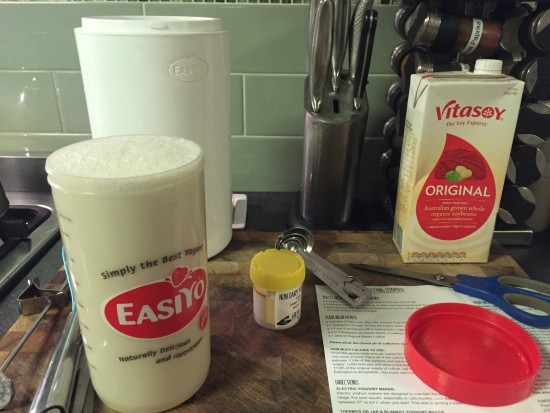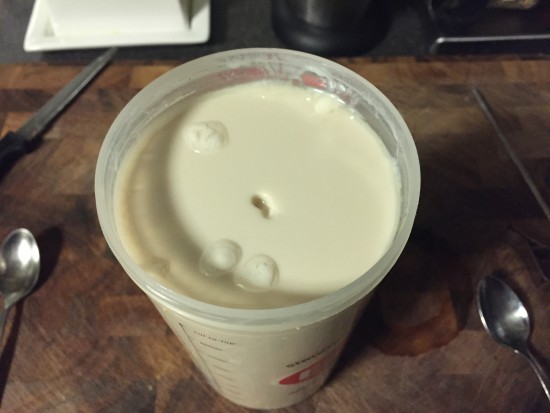This recipe makes a wonderful soy yoghurt using our Mild or Tangy (Dairy Based) Yoghurt Culture or Vegan Soy Yoghurt using our Non-Dairy Culture.
YOU WILL NEED THE FOLLOWING ITEMS
- A yoghurt maker, or a jar large enough to hold one litre of milk.
- A stainless steel pot, or glass jug if planning to heat the milk in a microwave.
- Dairy thermometer.
- An esky to put the jar in, or a blanket and a warm spot if you do not have a yoghurt maker.
YOUR INGREDIENTS
- 1 Litre of “Soy” milk
- 1 Tablespoon of Sugar
(acts as food for the culture) - 1 dose of Yoghurt Starter Culture, approx 1/64th teaspoon (a heaped drop)
(Up to 100 doses per sachet of culture).
Note: The amount of culture used for one litre is VERY SMALL.
DIRECTIONS
Mix the honey/sugar into soy milk warmed to 40°, or use cold soy and then heat to 40° C. Add your starter culture and mix well to ensure the culture is evenly distributed.
The sugar, honey, agave nectar, maple syrup or golden syrup, is added as a food source for the living culture, and is optional. You should try with, and without, to find your preference.
Pour your milk into the yoghurt maker, or jar you have selected. Maintain the milk mixture between 37° and 43° C for 8-12 hours, or even longer.
Here is a video tutorial to help you out.
COMMENTS
Experimentation is OK.
Every brand of Soy Milk is slightly different, so try different brands.
The Soy Protein Powder you use may be different, or even if the same, feel free to try different quantities.
The yoghurt culture acts, and grows by eating the available sugars, or carbohydrates, and turning them into an acid. If you like a more acidic yoghurt feel free to vary the quantity of sugar, or even try sucrose, which is just a more complex sugar.
A NOTE ABOUT YOGHURT MAKERS
An electric yoghurt maker will maintain the heat very well, but may creep up in temperature as previously mentioned.
Our Electric Yoghurt Maker has been built to maintain the correct temperature range indefinitely.
A thermos style yoghurt maker will have directions on maintaining the heat. The only change required here is that in an EasiYo system for example, you should not fill the external container so high with boiling water, as to have it come in direct contact with the yoghurt container as this may scald, and kill some culture. Just fill it to the level of the hole in the baffle, and this will give you the benefit of a heat reservoir, without risking scalding or killing the culture.

If you do not have a yoghurt maker, then place your jar in an esky and add warm water, but do not have very hot, or boiling water, in direct contact with the jar. You can also wrap your jar in a blanket, and place it in a warm place; on top of the hot water heater works well in my laundry.

CHECKING YOUR YOGHURT
To check if your yoghurt is ready, press a spoon into the surface of the yoghurt and see if the impression of the spoon is left. If so, it is done.
Chill for a few hours, then mix in fruit, jam, or even trail mix, as the yoghurt is served, or eat plain, over homemade apple pie perhaps.
ADDING PROBIOTICS
You can also add a probiotic culture if you wish. This must be done at the same time that you add your yoghurt culture.
CLEANLINESS
As with making any fermented milk products, cleanliness is vital in yoghurt making. Make sure that you thoroughly clean and sterilise all your utensils before using them. By heating milk to 40° C and then keeping it at that temperature you are deliberately creating the perfect environment to grow bacteria. Just be sure that you are only growing the bacteria (starter culture) that you have introduced, and not some other bacteria that blew in on the wind.
